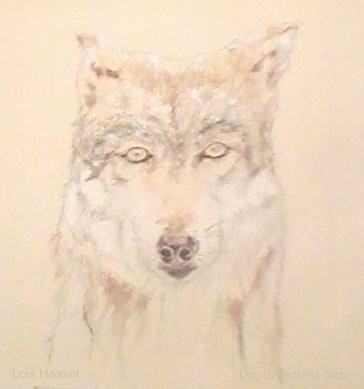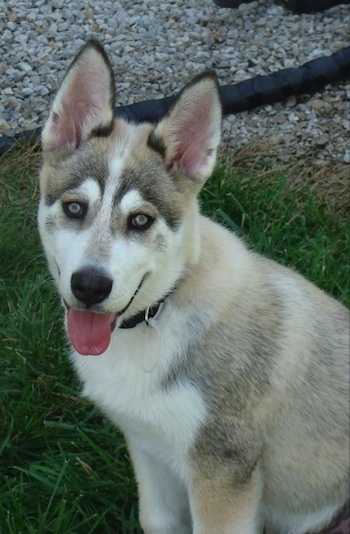
"These are photos of my boy Tykoda. He is a 1½-year-old hybrid. His mother and father are Eastern and Canadian timber wolves. His grandmother is a wolf mix also. As I looked through your photos I saw animals that look just like him. I rescued an 8-month-old before Ty and had to put him down because of distemper. The vet tech who was helping me with him turned out to be the breeder. Spirit passed on and the breeder offered me Ty. We have been together since he was 5 weeks old, and have traveled all over the Midwest and southeast. Spirit may be gone but I have been blessed with the best animal I’ve ever had. I have pictures of him from the day he was born up to recently. Enjoy and know that he is in good hands."
Family: Canidae
Subspecies: Canis lupus lycaon
Coat colors range from grizzled gray to black to nearly all white.
Timber wolves in the wild are usually found in packs of five to 12 animals. There is one alpha male and one alpha female in the pack. A hierarchy of dominant and subordinate animals within the pack helps them to function as a unit. Only one female in the pack breeds each year to the alpha male. The pack communicates with one another by using body language, facial expressions, scents and vocalizations such as howling. The rules of the pack are very important to them, as instinct tells them their survival depends on it. Subordinate members look to the alpha male and alpha female for direction. Their diet consists of bison, moose, elk, caribou, deer, rabbit, hare, beaver, mice and other rodents, and fish along with other animals. Some people have timber wolves in captivity as pets. Timber wolves living as pets still retain all of their natural born instincts.
Height: 26-33 inches (66-83 cm.)
Weight: 40-175 pounds (18-79 kg.)
Body Length: 40-58 inches (101-147 cm.)
--
Timber wolves live in packs, which are complex social structures.
Timber wolves in the wild usually follow the migration patterns of their prey. Males usually stay within 70 miles of their natal territory. Females usually stick a little closer, straying no more than 48 miles from their territory. When they do stray further it is usually in search of a new pack. On average a wolf pack will travel about 30 miles a day. Timber wolves in captivity still retain the instinct to travel and should be taken on daily walks where they are made to heel next to or behind the human holding the leash.
About 5 to 10 years in the wild, longer in captivity.
About 5 to 6 pups
--
Timber wolves can be found in North America, Europe, and Asia. A timber wolf, like all other wolves, is a subspecies of the gray wolf. The timber wolf is related to the coyote, jackal and domestic dog. They are pack animals living with a structured, strict, orderly system.
--
--

Mexican Gray Wolf. Acrylic paints and colored pencils, artist Lois Hassel

Tykoda the Eastern and Canadian timber wolf mix as an adult.

Tykoda the Eastern and Canadian timber wolf mix as an adult.

Tykoda the Eastern and Canadian timber wolf mix as an adult.

Tykoda the Eastern and Canadian timber wolf mix as an adult.

Tykoda the Eastern and Canadian timber wolf mix as a puppy.

Tykoda the Eastern and Canadian timber wolf mix as a puppy.

Tykoda the Eastern and Canadian timber wolf mix as a puppy.

Tykoda the Eastern and Canadian timber wolf mix as a young puppy.

Tykoda the Eastern and Canadian timber wolf mix as a young puppy with his littermates.